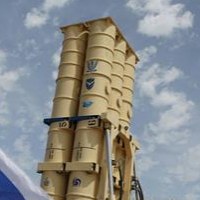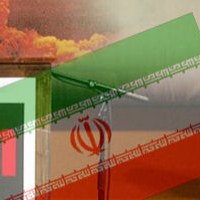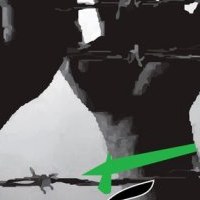![]()
Sun, Nov 27, 2011
Iran: Possible scenarios of war against Iran: a look from Tehran
Originally published by the Meir Amit Intelligence and Terrorism Information Center in bulletin number 142.
This week the official website of Supreme Leader Ali Khamenei uncharacteristically published a commentary article titled “Possible scenarios of threat against Iran”. The article, also published in two parts in the daily Resalat, was written by Dr. Amir Mohebbian, a top Iranian political commentator affiliated with the conservative camp. In light of the media discourse in recent weeks on a possible attack on Iran, the author of the article offers an in-depth analysis of three possible scenarios of an attack on Iran led by the United States and its allies, and estimates the likelihood of each.
Dr. Mohebbian begins the article by discussing the Western policy towards Iran, saying it is based on a combination of hopes and concerns about developments in Iran. On one hand, the West hopes to take advantage of Iran’s ethnic and national heterogeneity to stir instability in the border regions populated by ethno-linguistic minorities; in addition, the West pins hopes on internal political developments in Iran and the chance to make the regime lose control as a result of domestic challenges. On the other hand, the West is aware of Iran’s growing influence in the region due to the “Islamic awakening”; the relative ineffectiveness of the sanctions imposed on Iran; the strong ties between Iran, Hezbollah, and Syria; and Iran’s military growth despite the sanctions.
For years the West has tried various tactics against Iran: Western-backed subversion in the border regions was curbed thanks to Iranian activity against the Baluchi Jondollah and the Kurdish Pejak organizations, efforts to help the Syrian opposition in an attempt to topple President Assad and escalate pressure on Hezbollah have so far been unsuccessful, activity against the Revolutionary Guards’ Qods Force and the escalation of sanctions against Iran have also failed to fulfill the objectives of the West, key among which is toppling the regime. The Western world’s hopes of toppling the regime by having Iran’s neighbors exert the same kind of pressure they did in the Iran-Iraq War; organizing an internal uprising, as was the case in the riots of 2009; and secularizing the regime, which was evident in the reform period, have been disillusioned. The West is therefore left with two ways to realize its objective: weakening the regime and rendering it more vulnerable, and launching a military attack.
Dr. Mohebbian goes on to detail three possible scenarios for a war against Iran led by the United States and its allies:
- An all-out war of attrition combined with ground intervention after an air assault.
- A limited war which includes action against the command centers of the regime and is aimed to advance political objectives: at best, toppling the regime; at worst, forcing Iran into submission at the negotiating table.
- Selective war against specific targets aimed to strip Iran of its offensive capabilities, particularly those that can be used against Israel.
Mohebbian believes that the first scenario is highly unlikely given the severe problems involved in its implementation: the ability of Western countries to coordinate and carry out such a complex operation is limited and almost non-existent; occupying and exerting complete control over Iran will have far-reaching geopolitical and geo-strategic consequences for the international balance of power which will pose a threat to the status of Russia and China and force them to react; historic experience shows that after the Vietnam War the United States avoided going to war against countries it wasn’t certain of being able to defeat; the end of the George Bush era marked the end of the radical era of United States policy; the coming presidential elections in the United States will likely have an impact on its foreign policy and the American administration will go to war only if it’s clear that it ends successfully in time for the elections; the United States is facing severe economic and social problems that prevent it from going into another war; Iran is a very large country where waging a war of attrition will be difficult; and the West doesn’t have enough intelligence on Iran’s capabilities. In light of the above, it is Mohebbian’s assessment that the chances for an all-out war against Iran are approaching zero.
The second scenario (limited war against the regime’s “nerve center”) also involves considerable problems: such an offensive would require the West to have confidence in its ability to paralyze the regime already after the first blow; the Iranian regime, which learned the lessons of previous wars waged by the United States, took the necessary measures to prepare for an attack on its power structures and is ready to protect itself from serious damage; such an attack can lead to unpredictable reactions by the regime against the West; the United States cannot be certain that an attack on the regime’s targets will not further radicalize it and encourage it to set the entire region on fire, threatening nearby Arab countries; it is unlikely that European countries, which enjoy good economic relations with Iran, will be willing to take part in the “dangerous game” played by the United States for the latter’s own interests; the United States cannot be certain that, if the regime falls, there will be a new regime it can control; even if such a war can bring Iran back to the negotiating table, there is no guarantee that it will end with any kind of achievement for the West. Regardless of its negotiating stance, Iran may employ strategic deception and engage in covert operations, and even if the regime does surrender and sign an agreement to suspend the nuclear program, there is no guarantee that it will not be rejected by the Iranian people.
The third scenario (selective war against specific targets) is likewise complicated. If the West chooses to attack economic targets, it will put Iran’s civilian population at risk and will only garner more support for the regime; it is impossible to attack all of Iran’s military targets due to its size; a selective war may deteriorate into an all-out or at least a regional war; if nuclear targets such as the Bushehr reactor are attacked, it may have severe environmental repercussions for nearby countries; an attack on specific nuclear targets will not eliminate Iran’s scientific nuclear capabilities.
Mohebbian concludes by saying that while the third scenario is the most plausible, even the likelihood of this scenario is fairly low.
The commentator also discusses the question of why the West keeps bringing up the military option even though it is aware of the fact that it will come at a high, unknown price. His answer is that it is part of a psychological warfare campaign. The war is a lie that can always be used to put Iran to the test and achieve a number of objectives: intimidating the Iranian people to increase the pressure exerted on the regime, provoking disagreements between hawks and doves among senior regime officials, hitting Iran’s economy and reducing the regime’s ability to justify the harsh economic conditions, creating an internal crisis, making achievements at the negotiating table, throwing the regime from the offensive to the defensive and forcing it to focus on its own survivability, and testing the regime’s ability to deal with crisis situations.
By bringing up the military option, the United States aims to test Iran’s reaction and the cohesion of the regime’s top echelon, mobilize the support of Russia and China for sanctions against Iran, spread fear in Arab countries and encourage them to purchase American weapons to defend themselves against Iran, force Iran into such political concessions as terminating its support for Hezbollah and Syria, and curbing Iran’s influence on the “Islamic awakening”.
Mohebbian concludes the article with a discussion of Iran’s response to the threats it has received, arguing that the well-coordinated reactions by top regime officials and all of the country’s political factions to the threats, as well as the public’s disregard for them, reveal the inadequacy of the American strategy. According to the commentator, the Supreme Leader’s public remarks concerning the military threats are aimed to send several important messages to the West: Iran will not yield to pressure, there is unity among the decision makers, Iran has no offensive intentions and poses no threat to any country in the region, it will not accept being terrorized and threatened, and its policy is dependent on the policy of the other side. A reasonable policy by the United States will be met with a reasonable course of action, and any aggression will be met with a strong reaction (www.khamenei.ir, November 18).



 RSS
RSS











Iran: Possible scenarios of war against Iran: a look from Tehran | Middle East, Israel, Arab World,. http://t.co/wFdxB3Gd
Iran: Possible scenarios of war against Iran: a look from Tehran | Middle East, Israel, Arab World,. http://t.co/wFdxB3Gd